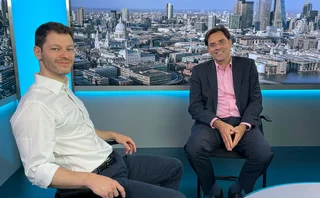

Backtesting correlated quantities
A technique to decorrelate samples and reach higher discriminatory power is presented
CLICK HERE TO DOWNLOAD THE PDF
Backtesting financial models over long horizons inevitably leads to overlapping returns, giving rise to correlated samples. In this paper Nikolai Nowaczyk and Vladimir Piterbarg propose a new method of dealing with this important problem by using decorrelation and show how this increases the discriminatory power of the resulting tests
Correlations arise naturally in many backtests – for example, as the autocorrelation of time series or cross-correlation of any model
Only users who have a paid subscription or are part of a corporate subscription are able to print or copy content.
To access these options, along with all other subscription benefits, please contact info@risk.net or view our subscription options here: http://subscriptions.risk.net/subscribe
You are currently unable to print this content. Please contact info@risk.net to find out more.
You are currently unable to copy this content. Please contact info@risk.net to find out more.
Copyright Infopro Digital Limited. All rights reserved.
As outlined in our terms and conditions, https://www.infopro-digital.com/terms-and-conditions/subscriptions/ (point 2.4), printing is limited to a single copy.
If you would like to purchase additional rights please email info@risk.net
Copyright Infopro Digital Limited. All rights reserved.
You may share this content using our article tools. As outlined in our terms and conditions, https://www.infopro-digital.com/terms-and-conditions/subscriptions/ (clause 2.4), an Authorised User may only make one copy of the materials for their own personal use. You must also comply with the restrictions in clause 2.5.
If you would like to purchase additional rights please email info@risk.net
More on Cutting Edge
A comparison of FX fixing methodologies
FX fixing outcomes are mostly driven by length of calculation window
Quantum cognition machine learning: financial forecasting
A new paradigm for training machine learning algorithms based on quantum cognition is presented
A hard exit threshold strategy for market-makers
A closed-form solution to derive optimal stop-loss and profit-taking levels is presented
Pricing share buy-backs: an alternative to optimal control
A new method applies optimised heuristic strategies to maximise share buy-back contracts’ value
CVA sensitivities, hedging and risk
A probabilistic machine learning approach to CVA calculations is proposed
Podcast: Alvaro Cartea on collusion within trading algos
Oxford-Man Institute director worries ML-based trading could have anti-competitive effects
Podcast: Lorenzo Ravagli on why the skew is for the many
JP Morgan quant proposes a unified framework for trading the volatility skew premium
Bridging the gap risk reloaded: modelling wrong-way risk and leverage
A model extends the counterparty risk calculation to include nonlinear and complex portfolios







